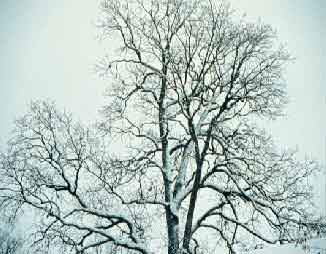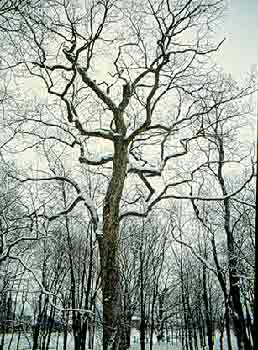 Chestnut Oak - Quercus prinus
Chestnut Oak - Quercus prinus
Beech Family (Fagaceae)
- Native habitat: Rocky sites in eastern U.S.; Kentucky native.
- Growth habit: Oval to rounded crown.
- Tree size: A rapidly growing tree, the chestnut oak can attain a height of 60 to 70 feet with a similar spread.
- Flower and fruit: Female flowers are inconspicuous; male catkins are pendulous. The 1- to 1½-inch-long acorn is sweet enough to eat without boiling.
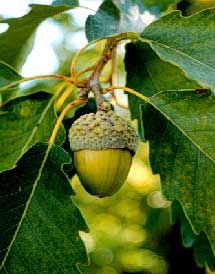 Leaf: The long, chestnut-shaped leaves become dark yellowish-green in summer and change to orange- yellow to yellow-brown in fall.
Leaf: The long, chestnut-shaped leaves become dark yellowish-green in summer and change to orange- yellow to yellow-brown in fall.- Hardiness: Winter hardy to USDA Zone 4.
The chestnut oak is a stately giant. Its inner bark, like that of most other oaks, is rich in tannic acid, which is used for tanning purposes. Acorns of chestnut oak are produced singly or in pairs. They are a wildlife staple.
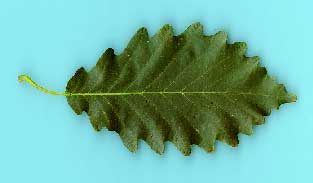 Chestnut oak's specific epithet, prinus, is derived from the classic Greek name for a European oak, prinos. The chestnut oak is noted for growing on steep, rocky hills where other oaks cannot survive. Its well-developed tap root makes this tree sturdy and adaptable under these unfavorable conditions.
Chestnut oak's specific epithet, prinus, is derived from the classic Greek name for a European oak, prinos. The chestnut oak is noted for growing on steep, rocky hills where other oaks cannot survive. Its well-developed tap root makes this tree sturdy and adaptable under these unfavorable conditions.
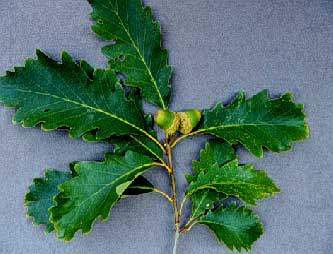 Unfortunately, because chestnut oak seems indestructible, it is often left on new construction sites. Without special care during house building, these trees can suffer construction damage but may not die for several years.
Unfortunately, because chestnut oak seems indestructible, it is often left on new construction sites. Without special care during house building, these trees can suffer construction damage but may not die for several years.
The national champion chestnut oak is 144 feet tall and is in Tennessee in Great Smoky Mountains National Park.


